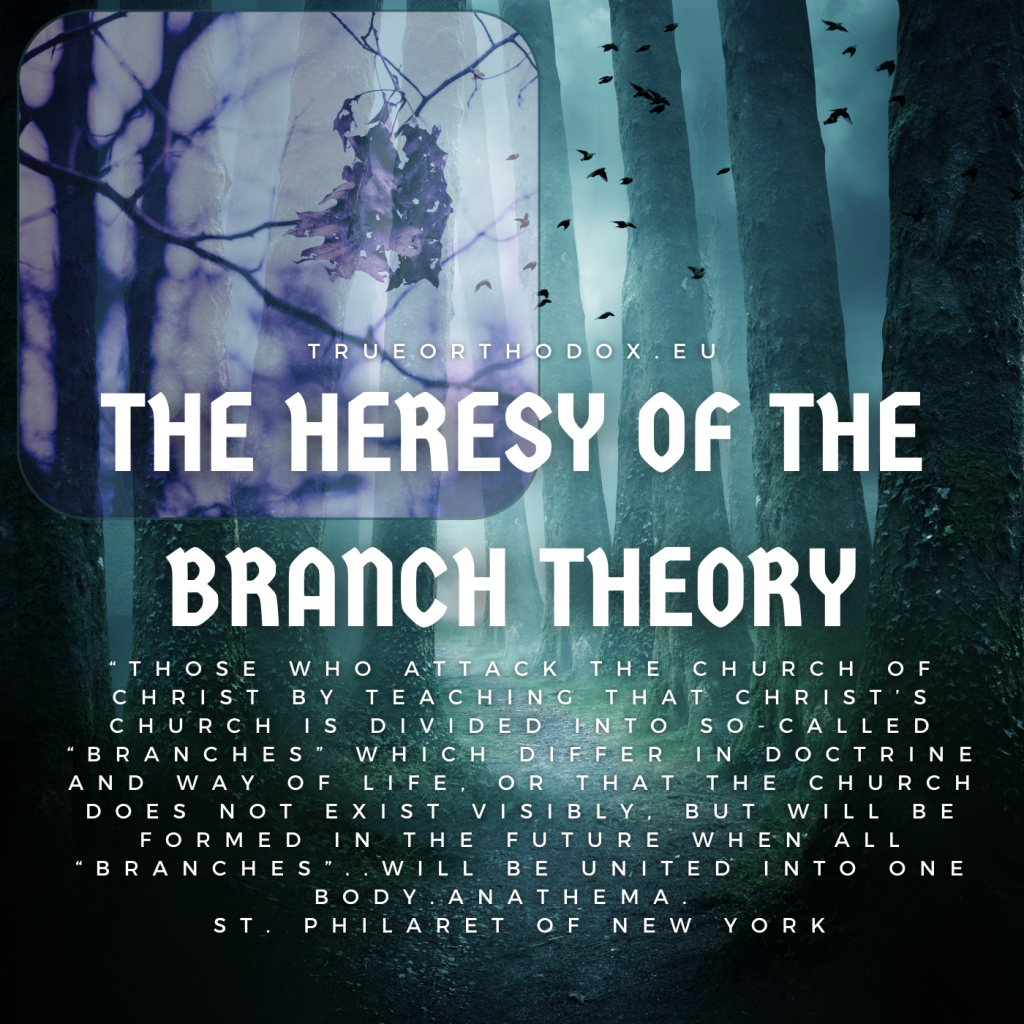The Branch Theory of Ecclesiology: Why Is it a Heresy?

What Is the Branch Theory of Ecclesiology?
The Branch Theory is a theological concept that seeks to explain the existence of various Christian denominations as different branches of the same universal Church. According to this theory, the Catholic Church, the Eastern Orthodox Church, and the Anglican Communion represent three valid branches of the one true Church, despite their doctrinal differences and historical separations. Proponents of the Branch Theory argue that these branches share a common apostolic foundation, rooted in the early Church, and therefore all possess a legitimate claim to the title of “Church.”
The Branch Theory emerged in the 19th century, primarily within the Anglican tradition. It was developed as a response to the growing awareness of ecclesial diversity and the desire to maintain unity among Christians despite visible divisions. For Anglicans, this theory provided a way to assert their continuity with the ancient Church while also recognizing the legitimacy of other historic Christian bodies. Their understanding was that there is no one Church (against whom the Lord says the gates of hell shall not prevail) but parts of the “Church” are scattered.
Why the Branch Theory Is Considered a Heresy
- Undermining the Unity of the Church:
The central objection to the Branch Theory is that it undermines the essential unity of the Church. Traditional Christian teaching holds that the Church is “one, holy, catholic, and apostolic,” as professed in the Creed. This unity is not merely a spiritual or moral ideal but a reality. The Church is seen as a single, unified body under the authority of Christ, with a clear continuity in doctrine, mysteries, and apostolic succession. By suggesting that the Church can exist as doctrinally divergent branches, the Branch Theory challenges this fundamental understanding of ecclesial unity. - Contradicting Apostolic Succession:
Apostolic succession is the belief that the authority given by Christ to the apostles has been passed down through an unbroken line of bishops without heresy. This succession is seen as a mark of the true Church. The Branch Theory, however, implies that this succession can exist independently in multiple, conflicting ecclesiastical bodies. Critics argue that this notion dilutes the significance of apostolic succession and the safeguarding of true doctrine, which are seen as essential to the Church’s identity. - Historical Inconsistency:
Historically, the Church has never recognized the existence of multiple, parallel “branches” as constituting the one true Church. The schisms that led to the separation between the Monophysites,Roman Catholic, etc. were considered the falling into heresy of these groups and not the emergence of legitimate new “branches”. By retroactively applying the Branch Theory, proponents attempt to reinterpret history in a way that is inconsistent with the understanding of the Church throughout the ages. - Ecumenism vs. Relativism:
The Branch Theory, while appearing ecumenical, is often criticized for promoting a form of theological relativism. It suggests that doctrinal differences on key issues (such as the nature of the Eucharist, the role of the papacy, or the interpretation of Scripture) do not fundamentally compromise the validity of a Church. However, Christian teaching insists that unity in faith and doctrine is essential to the Church’s mission. The Branch Theory, by downplaying these differences, diminishes the importance of truth in the pursuit of unity.
While the Branch Theory of ecclesiology was developed with the intention of fostering unity among Christians, it is regarded as heretical by those who hold to a more traditional understanding of the Church. By challenging the visible and doctrinal unity of the Church, the Branch Theory deviates from the historic and orthodox teachings about the nature of the Church as one, holy, catholic, and apostolic. For these reasons, it remains a controversial and largely rejected concept within traditional Christian theology.
For those seeking to understand the true nature of the Church, it is essential to engage with Orthodox historical teachings and to recognize the importance of maintaining unity in both faith and doctrine.






